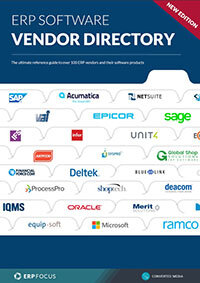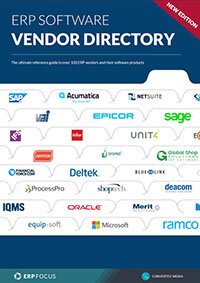5 Scenarios Illustrating the Need for Multi-Language ERP
As global business becomes everyday practice, our enterprise systems must adapt. Process communication now relies heavily on a multi-lingual business model meaning multi-language ERP is becoming a necessity rather than a luxury. The following scenarios illustrate this need.
Saroyan just finished writing a purchase order for 9,500 meters of custom cable for the sound system planned at a new stadium in Germany. She works in Iran and, of course, is a native Farsi speaker. The planned order inquiry in the multi-language ERP she uses is in Farsi. The job for the sound system originated at the UK office of a company based in the USA.
Rosana opened the job and scheduled the plan that created Saroyan’s demand. Rosana uses the same ERP and her input screens and reports all show in her native English. Both use the same ERP system with a third-party translation software that allows users almost anywhere to use their own language.
Hua is one of the engineers developing the sound system. He did many of the drawings and most of the bill of materials. He is based in China and uses the same multi-language ERP. He can switch between pinyin and hanzi as both are supported in the translator. His drawings were originally documented in pinyin and they display or print in other languages.
Process communication now relies heavily on a multi-lingual business model meaning multi-language ERP is becoming a necessity rather than a luxury
Saroyan sent copies of those drawings to Juaquin, who works at the cable manufacturer in Spain. The drawing originally written in pinyin in China and coming to him from Iran now reads perfectly in Spanish. The purchase order that was written in Farsi reads exactly correct in Spanish.
Falak is the project manager for the stadium sound system. He was born in Bangladesh and is a native Bengali speaker. His English has a bit of an accent still but his American English is fluent. The original order from the German stadium builder arrived in his office via EDI and was automatically converted to English. He can display it in Bengali if he isn’t sure about any fine points.
This project will take almost three years to complete. There will be suppliers in several countries and software developers in other countries. Eventually all their efforts will come together in Germany where workers, who will be mostly local Germans, will install the sound system.
Is your work spread across the globe in this way? Maybe yours is even more complex? The world has become smaller but we all have our own languages still and the translator on the Star Trek badges hasn’t been invented yet. But a multi-language ERP makes it almost a reality.
Free white paper

ERP Software Vendor Directory
Put the most comprehensive ERP vendor directory on your desk today

Related articles
-

Running a multi-country ERP
What to consider when running an ERP across multi-countries
-

Secret KPI: Why Your ERP Implementation Team Matters More Than Software
Learn how Godlan ensures successful ERP implementation for manufacturers with proven strategies &...
-

3 steps to standardizing ERP across operational sites
Learn about the best practices and lean models that you can use to standardize ERP across multipl...

